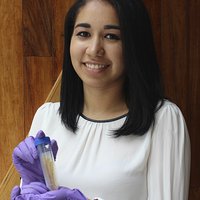A sizable percentage of hospital patients end up with an infection they didn’t have when they arrived.
Among the most lethal of these is Clostridium difficile. The bacterium, which spreads easily in hospitals and other health-care facilities, was the source of almost half a million infections among patients in the United States in a single year, according to a 2015 report by the Centers for Disease Control and Prevention. Fifteen thousand deaths were directly attributable to the bug.
Jenna Wiens, an assistant professor of computer science and engineering at the University of Michigan, thinks hospitals could learn to prevent many infections and deaths by taking advantage of the vast amounts of data they already collect about their patients.
“I think to really get all of the value we can out of the data we are collecting, it’s necessary to be taking a machine-learning and a data-mining approach,”
she says.
Wiens has developed computational models that use algorithms to search through the data contained in a hospital’s electronic health records system, including patients’ medication prescriptions, their lab results, and the records of procedures that they’ve undergone. The models then tease out the specific risk factors for C. difficile at that hospital.
“A traditional approach would start with a small number of variables that we believe are risk factors and make a model based on those risk factors. Our approach essentially throws everything in that’s available,” Wiens says. It can readily be adapted to different types of data.
Aside from using this information to treat patients earlier or prevent infections altogether, Wiens says, her model could be used to help researchers carry out clinical trials for new treatments, like novel antibiotics. Such studies have been difficult to do in the past for hospital-acquired infections like C. difficile—the infections come on fast so there’s little time to enroll a patient in a trial. But by using Wiens’s model, researchers could identify patients most vulnerable to infections and study the proposed intervention based on that risk.
At a time when health-care costs are rising exponentially, it’s hard to imagine hospitals wanting to spend more money on new machine-learning approaches. But Wiens is hopeful that hospitals will see the value in hiring data scientists to do what she’s doing.
“I think there is a bigger cost to not using the data,” she says. “Patients are dying when they seek medical care and they acquire one of these infections. If we can prevent those, the savings are priceless.”
—Emily Mullin




